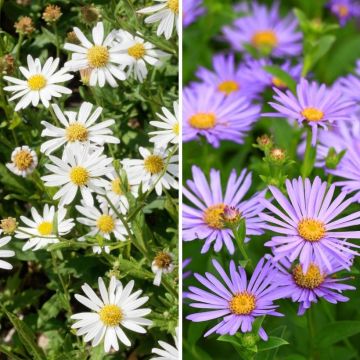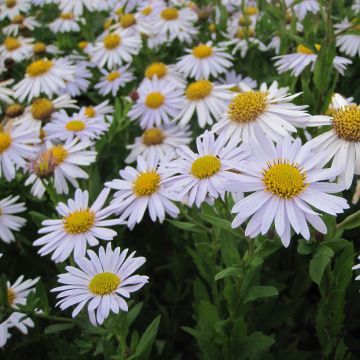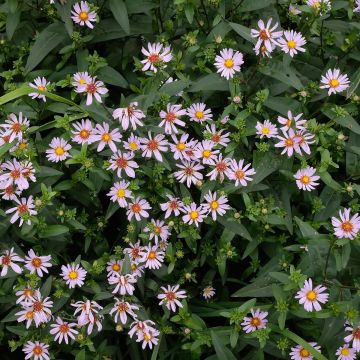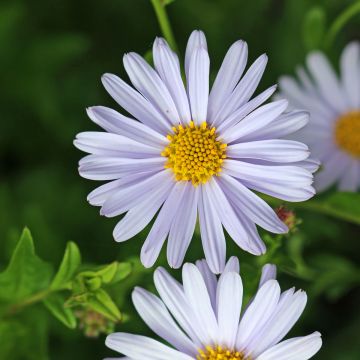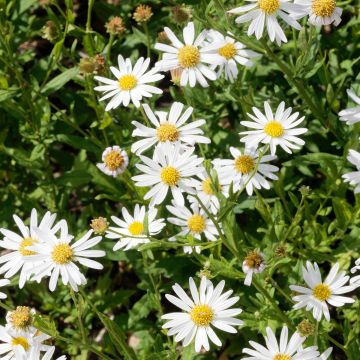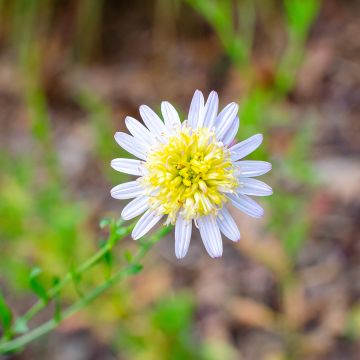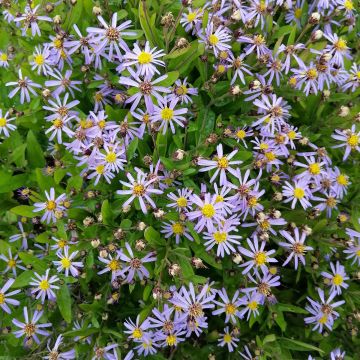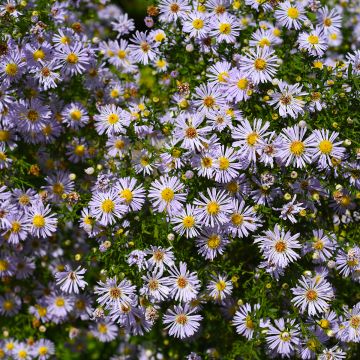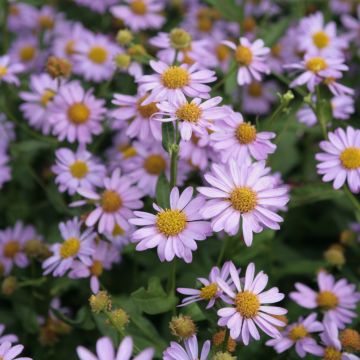

Kalimeris mongolica


Kalimeris mongolica
Kalimeris mongolica
Kalimeris mongolica
Mongolian Aster
Special offer!
Receive a €20 voucher for any order over €90 (excluding delivery costs, credit notes, and plastic-free options)!
1- Add your favorite plants to your cart.
2- Once you have reached €90, confirm your order (you can even choose the delivery date!).
3- As soon as your order is shipped, you will receive an email containing your voucher code, valid for 3 months (90 days).
Your voucher is unique and can only be used once, for any order with a minimum value of €20, excluding delivery costs.
Can be combined with other current offers, non-divisible and non-refundable.
Why not try an alternative variety in stock?
View all →This plant carries a 12 months recovery warranty
More information
We guarantee the quality of our plants for a full growing cycle, and will replace at our expense any plant that fails to recover under normal climatic and planting conditions.
Would this plant suit my garden?
Set up your Plantfit profile →
Description
Kalimeris mongolica is a fairly rare species in cultivation, yet very interesting due to the duration of its flowering, which begins in summer and only ends with the first frosts. This large perennial, native to central Asia and related to asters, is an unjustly overlooked plant and is underused in gardens despite its extraordinary adaptability. The white flowers are similar to small semi-double daisies with large yellowish-green hearts, and they emerge abundantly from an upright and bushy clump composed of large leafy stems. This plant deserves a place in your garden. It is incredibly easy to grow, and will thrive everywhere, in all soils, in all exposures, and under all climates.
Kalimeris mongolica, also known as Aster lautureanus var. mongolicus, Aster mongolicus, and also Kalimeris pinnatafida 'Hortensis,' is an herbaceous plant of the Asteraceae family, native to Mongolia, eastern Russia, and Korea. It forms upright clumps, at least 80cm (32in) tall and 50 to 60cm (20 to 24in) wide, composed of narrow and deeply incised leaves in the lower part of the stems, smaller and entire in the upper part. Its numerous flowers succeed each other from the beginning of summer until the first frosts, if care is taken to regularly remove faded flowers. The flowers are heads, composed of multiple white florets arranged in a collar around a large yellow centre tinged with green. The overall appearance is a bit tousled, as if the flowers were semi-double.
Blooming abundantly in late summer and autumn, at the same time as our summer asters, this very hardy, very resistant, and particularly adaptable plant deserves a place in all countryside gardens. It is a perfect perennial for low-maintenance gardens, as it requires no care or watering. This kalimeris blends very well with all other border plants such as heleniums, asters, Salvia microphylla, Limonium gmelinii subsp. hungaricum, Rudbeckia triloba, or the other aster that likes dry soils, Aster diplostephioides. It will give its best when planted in groups of 3 to 5 plants, in large sunny borders, on dry embankments, or in the back of a garden that is never watered. It perfectly accompanies autumn colours until the arrival of winter. It also blends beautifully with grasses (Stipa pennata, Sporobolus wrightii) and silver foliage of artemisias, cinerarias, or the silver pear tree, Pyrus salicifolia 'Pendula'.
Report an error about the product description
Kalimeris mongolica in pictures
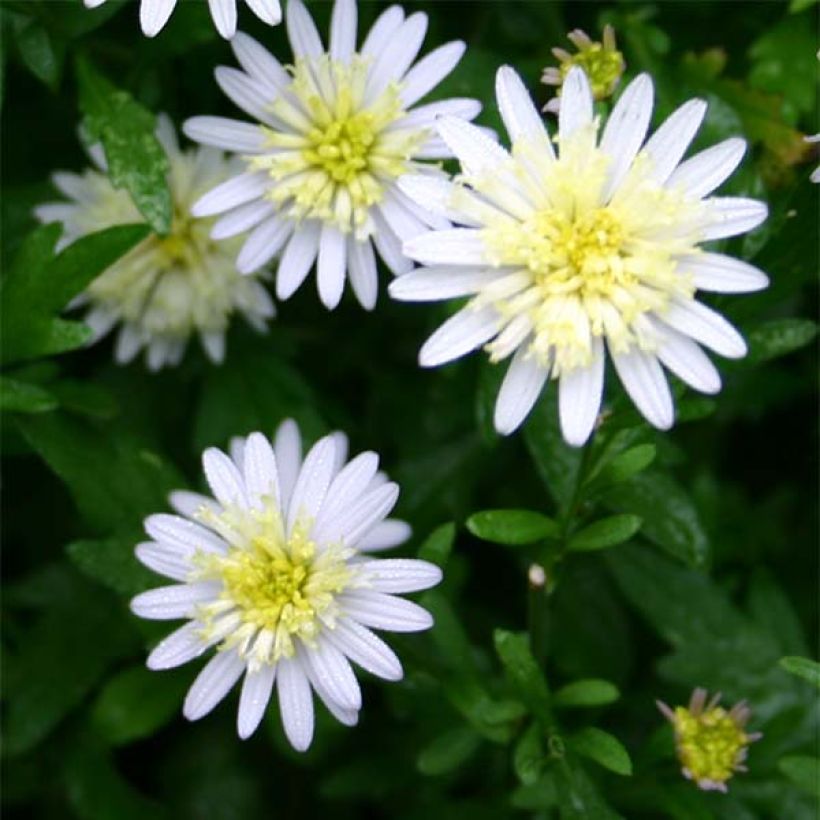

Flowering
Foliage
Plant habit
Botanical data
Kalimeris
mongolica
Asteraceae
Mongolian Aster
Central Asia
Other Kalimeris
View all →Planting and care
This genus, similar to asters, is composed of only about ten perennial species, all endowed with great robustness combined with extraordinary adaptability. You can cultivate them in the shade, at the base of birch trees, or in the sun in the well-drained soil of a scree garden. You can also grow them in the heavy soil of the stream bank. They adapt everywhere!
Avoid strong winds that could flatten the clumps. This plant is hardy, at least down to -20°C (-4°F). Regularly remove faded flowers to prolong flowering. Pinch out the tips at the beginning of vegetation to promote a compact habit. After three to four years of cultivation, the base becomes woody, and the plant weakens. A phenomenon also found in shrubby mallow. Replace it with young cuttings taken in spring.
Planting period
Intended location
Care
This item has not been reviewed yet - be the first to leave a review about it.
Haven't found what you were looking for?
Hardiness is the lowest winter temperature a plant can endure without suffering serious damage or even dying. However, hardiness is affected by location (a sheltered area, such as a patio), protection (winter cover) and soil type (hardiness is improved by well-drained soil).

Photo Sharing Terms & Conditions
In order to encourage gardeners to interact and share their experiences, Promesse de fleurs offers various media enabling content to be uploaded onto its Site - in particular via the ‘Photo sharing’ module.
The User agrees to refrain from:
- Posting any content that is illegal, prejudicial, insulting, racist, inciteful to hatred, revisionist, contrary to public decency, that infringes on privacy or on the privacy rights of third parties, in particular the publicity rights of persons and goods, intellectual property rights, or the right to privacy.
- Submitting content on behalf of a third party;
- Impersonate the identity of a third party and/or publish any personal information about a third party;
In general, the User undertakes to refrain from any unethical behaviour.
All Content (in particular text, comments, files, images, photos, videos, creative works, etc.), which may be subject to property or intellectual property rights, image or other private rights, shall remain the property of the User, subject to the limited rights granted by the terms of the licence granted by Promesse de fleurs as stated below. Users are at liberty to publish or not to publish such Content on the Site, notably via the ‘Photo Sharing’ facility, and accept that this Content shall be made public and freely accessible, notably on the Internet.
Users further acknowledge, undertake to have ,and guarantee that they hold all necessary rights and permissions to publish such material on the Site, in particular with regard to the legislation in force pertaining to any privacy, property, intellectual property, image, or contractual rights, or rights of any other nature. By publishing such Content on the Site, Users acknowledge accepting full liability as publishers of the Content within the meaning of the law, and grant Promesse de fleurs, free of charge, an inclusive, worldwide licence for the said Content for the entire duration of its publication, including all reproduction, representation, up/downloading, displaying, performing, transmission, and storage rights.
Users also grant permission for their name to be linked to the Content and accept that this link may not always be made available.
By engaging in posting material, Users consent to their Content becoming automatically accessible on the Internet, in particular on other sites and/or blogs and/or web pages of the Promesse de fleurs site, including in particular social pages and the Promesse de fleurs catalogue.
Users may secure the removal of entrusted content free of charge by issuing a simple request via our contact form.
The flowering period indicated on our website applies to countries and regions located in USDA zone 8 (France, the United Kingdom, Ireland, the Netherlands, etc.)
It will vary according to where you live:
- In zones 9 to 10 (Italy, Spain, Greece, etc.), flowering will occur about 2 to 4 weeks earlier.
- In zones 6 to 7 (Germany, Poland, Slovenia, and lower mountainous regions), flowering will be delayed by 2 to 3 weeks.
- In zone 5 (Central Europe, Scandinavia), blooming will be delayed by 3 to 5 weeks.
In temperate climates, pruning of spring-flowering shrubs (forsythia, spireas, etc.) should be done just after flowering.
Pruning of summer-flowering shrubs (Indian Lilac, Perovskia, etc.) can be done in winter or spring.
In cold regions as well as with frost-sensitive plants, avoid pruning too early when severe frosts may still occur.
The planting period indicated on our website applies to countries and regions located in USDA zone 8 (France, United Kingdom, Ireland, Netherlands).
It will vary according to where you live:
- In Mediterranean zones (Marseille, Madrid, Milan, etc.), autumn and winter are the best planting periods.
- In continental zones (Strasbourg, Munich, Vienna, etc.), delay planting by 2 to 3 weeks in spring and bring it forward by 2 to 4 weeks in autumn.
- In mountainous regions (the Alps, Pyrenees, Carpathians, etc.), it is best to plant in late spring (May-June) or late summer (August-September).
The harvesting period indicated on our website applies to countries and regions in USDA zone 8 (France, England, Ireland, the Netherlands).
In colder areas (Scandinavia, Poland, Austria...) fruit and vegetable harvests are likely to be delayed by 3-4 weeks.
In warmer areas (Italy, Spain, Greece, etc.), harvesting will probably take place earlier, depending on weather conditions.
The sowing periods indicated on our website apply to countries and regions within USDA Zone 8 (France, UK, Ireland, Netherlands).
In colder areas (Scandinavia, Poland, Austria...), delay any outdoor sowing by 3-4 weeks, or sow under glass.
In warmer climes (Italy, Spain, Greece, etc.), bring outdoor sowing forward by a few weeks.






























